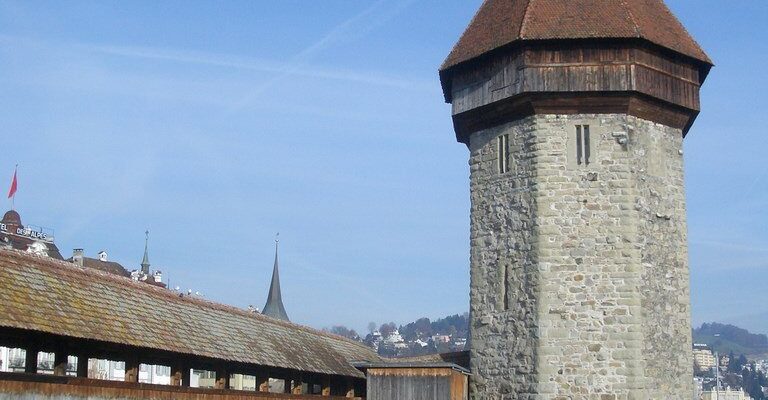Kapelbrücke Bridge
Kapelbrücke Bridge is part of a former fortification and Lucerne’s main attraction, located on the River Reuss. A symbol of modern Switzerland, it is officially recognized as the oldest of all wooden bridges in Europe. Another feature of the Kapelbrücke is that it is not only a historical monument to attract tourists: the bridge is used daily by thousands of citizens wishing to get from one part of Lucerne to another.
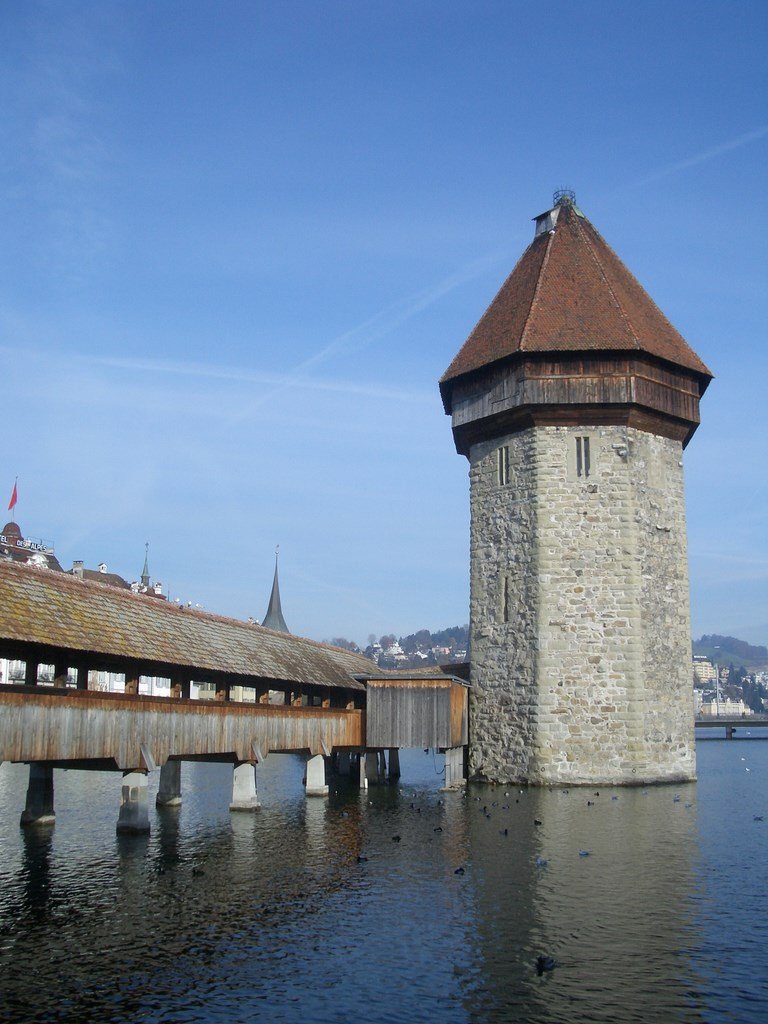
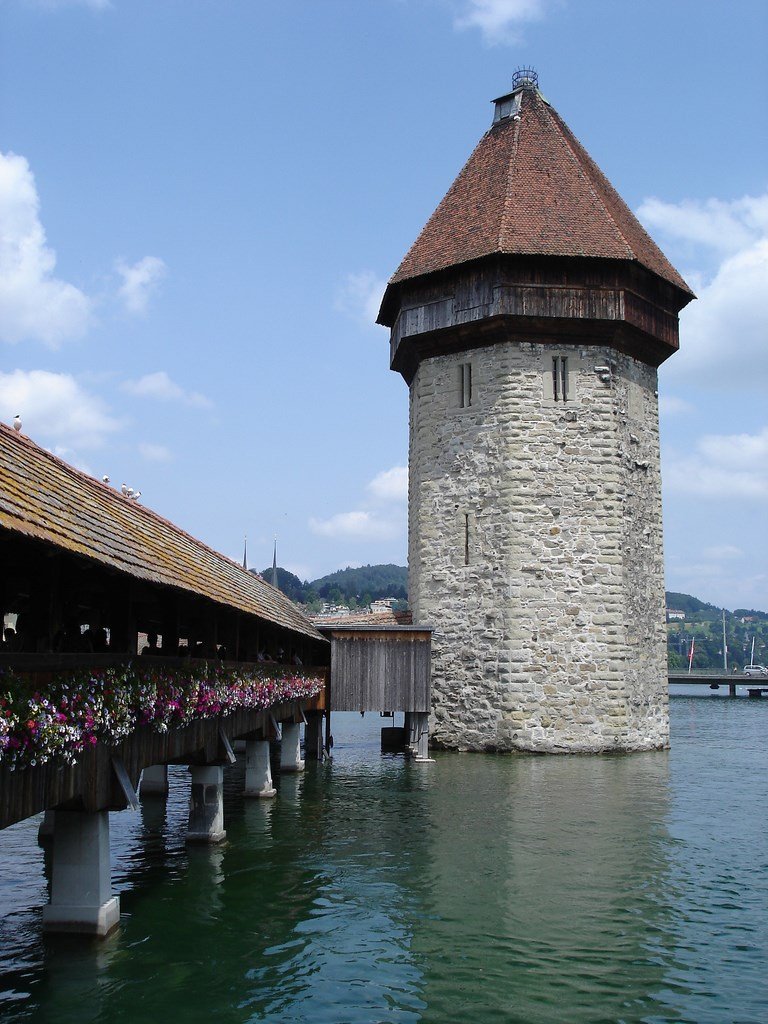
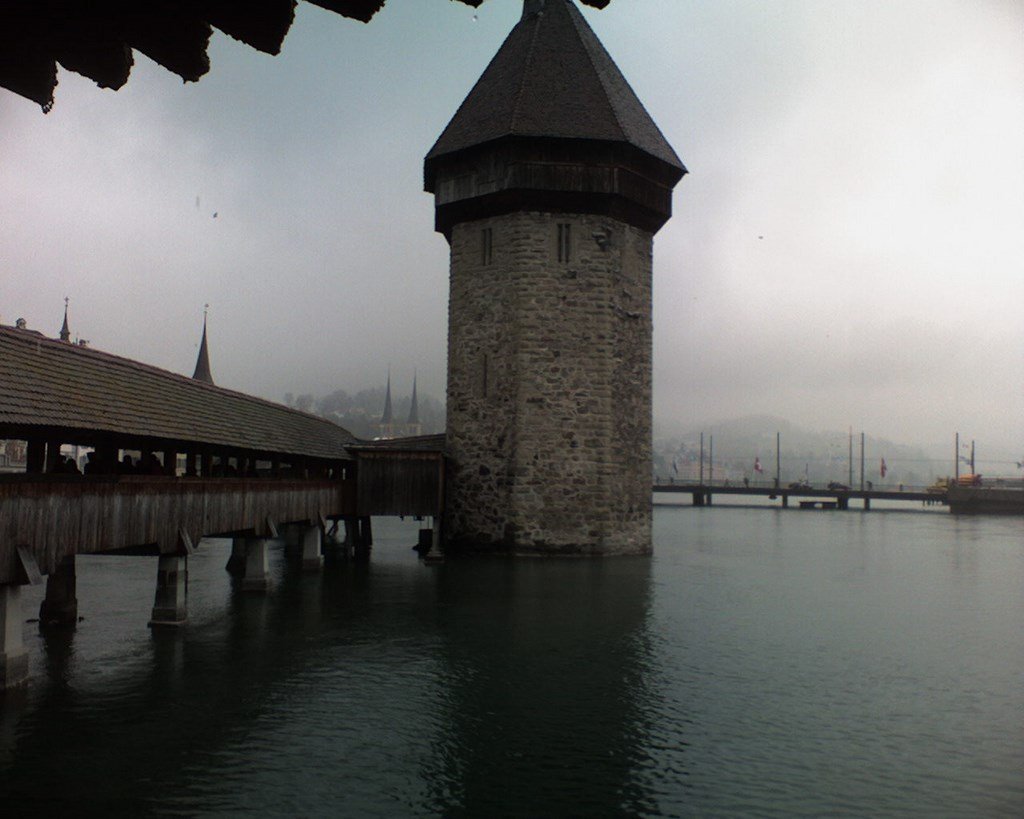
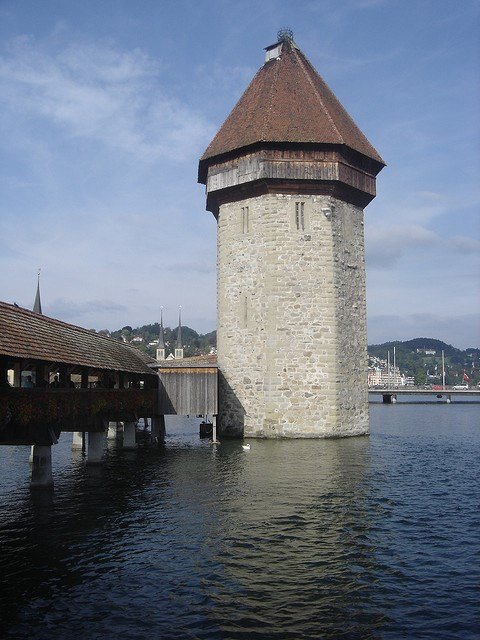
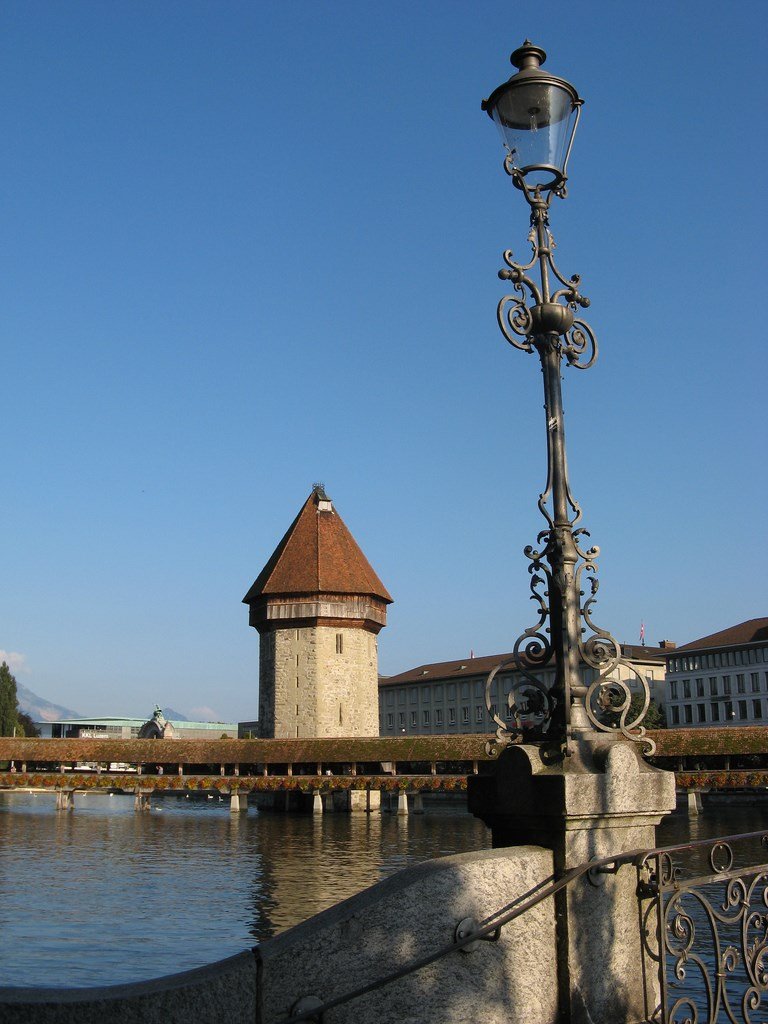
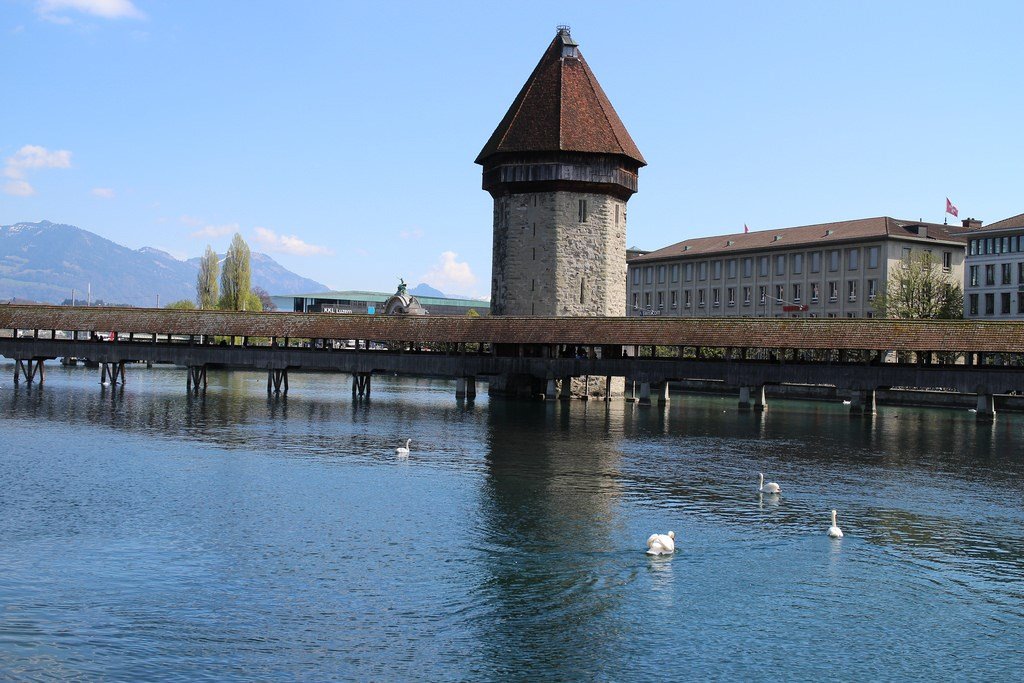
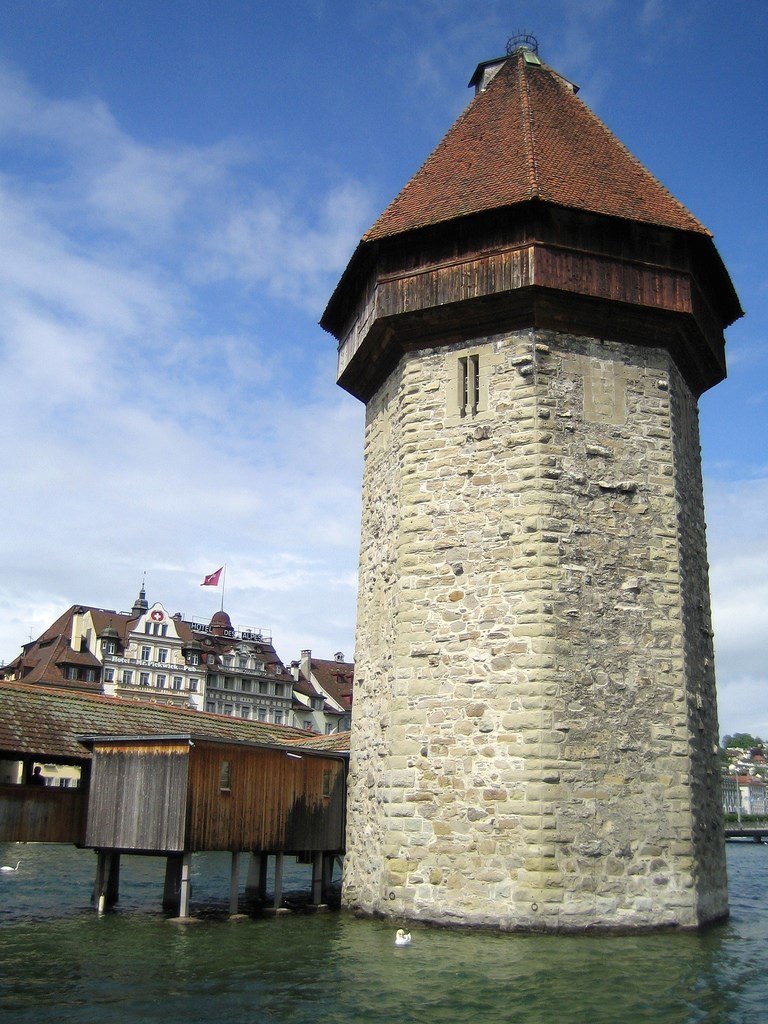
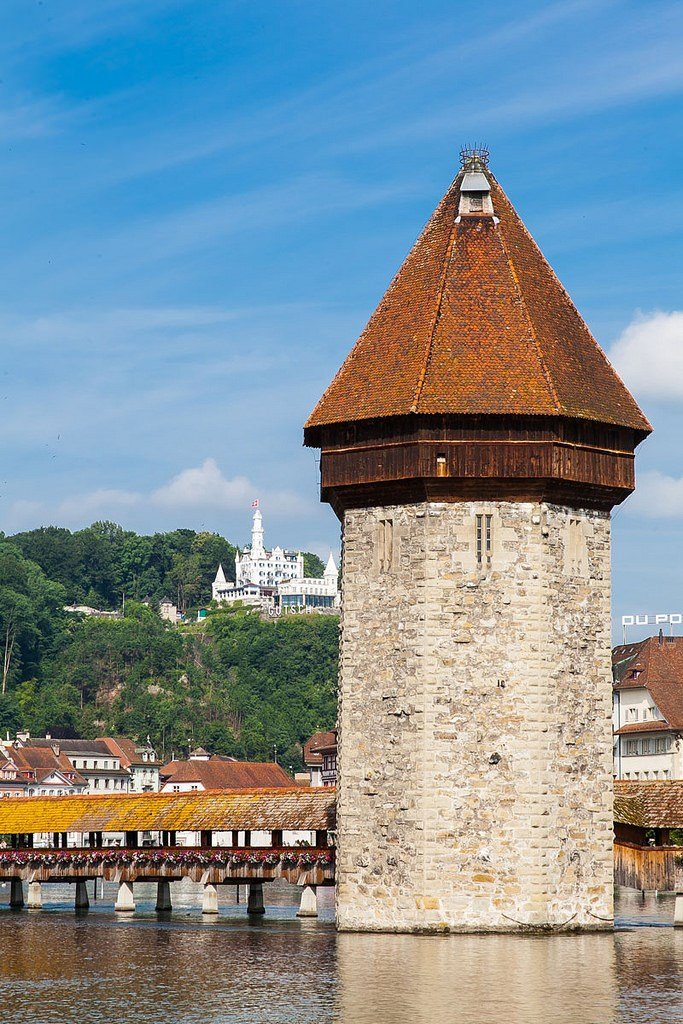
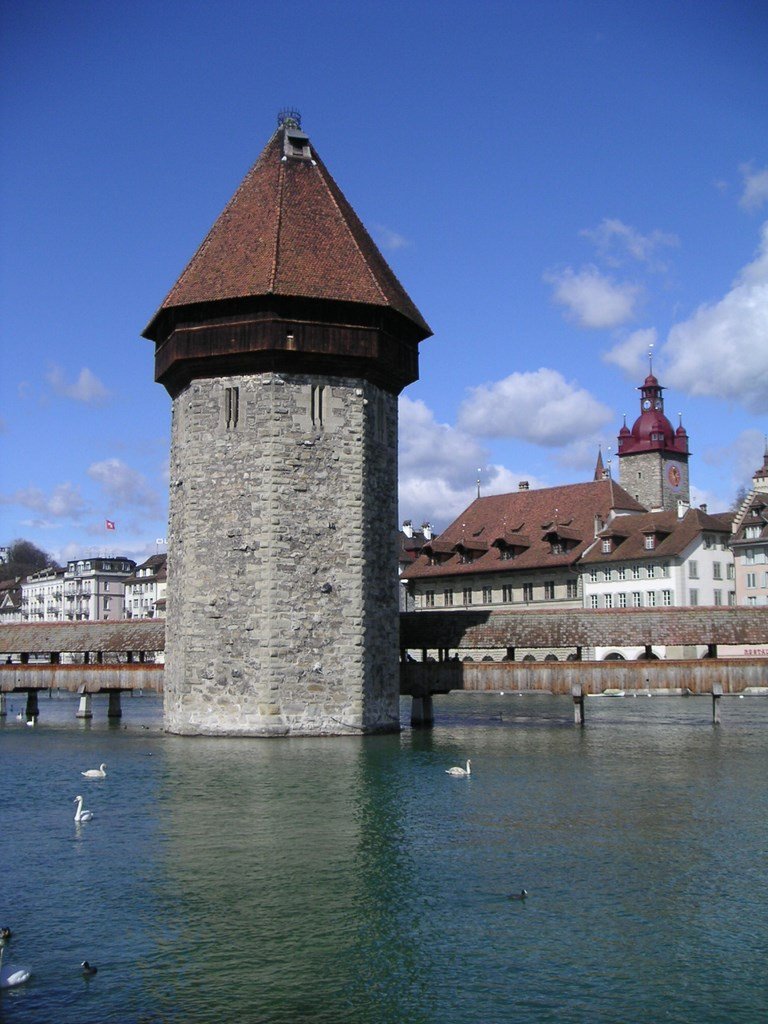
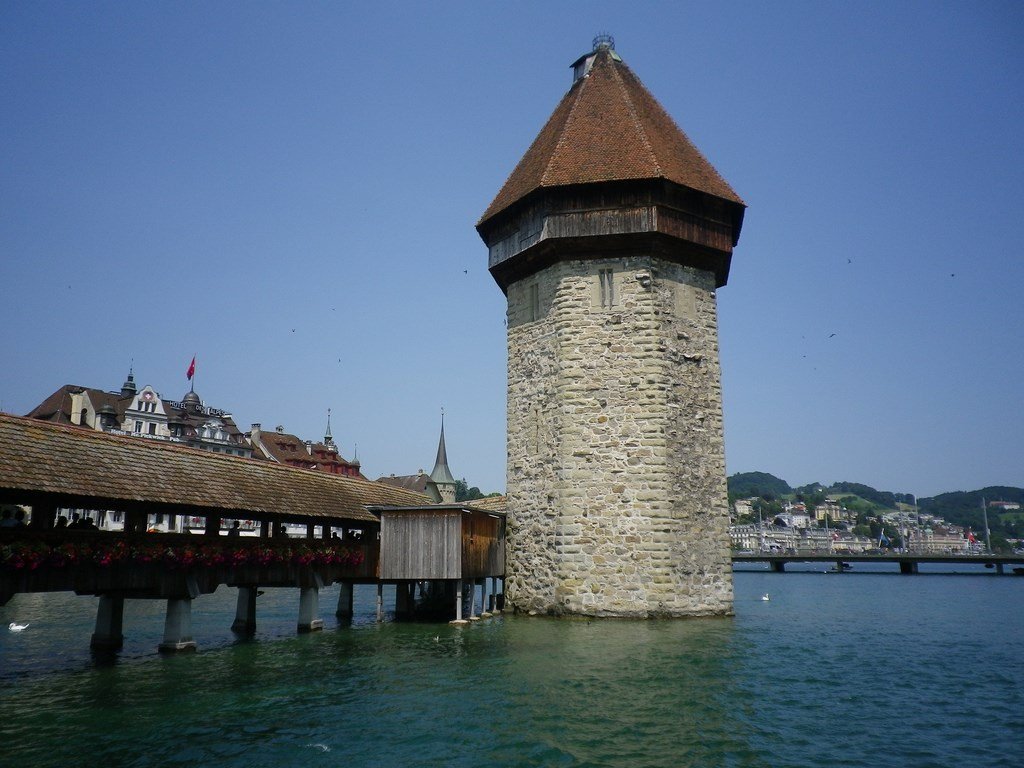
History of the Kapelbrücke Bridge
The wooden structure with a red tiled roof appeared in Lucerne in 1365. The bridge was named after the nearby St. Peter’s Chapel (Kapellbrücke – chapel bridge). Initially the length of this unique corridor was about 280 meters, but due to changes in the coastline in 1835 the structure had to be shortened considerably. Today it is the second longest covered bridge in Europe (204.7 m). The first place belongs to the German Holzbruecke, located in the town of Bad Seekingen (206.5 m).
.Conceived as part of a defensive fortification, the Kapelbrücke Bridge served as a connecting link between the residential quarters of the old and new town. The structure was further strengthened by the stone Wasserturm (Wasserturm – water tower). The octagonal-shaped structure was erected before the bridge construction began in 1300. As time went by, the need to protect Lucerne disappeared, and the city authorities immediately found a new use for the tower, first turning it into a dungeon, and then into a torture chamber for criminals and heretics. Today Wasserturm is not empty: part of the interior is occupied by all sorts of souvenir shops, the remaining area houses the guild hall of the association of artillerymen of Lucerne.
.Free art gallery for all comers
As rich as the historical past of the Kapelbrücke is, it is not to it that it owes its world fame, but rather to the collection of paintings under the roof of the bridge.
>
The double-sided triangular images were not created in the 17th century for aesthetic reasons. The improvised gallery became visual propaganda for the Counter-Reformation religious movement. The Zurich artist Hans Heinrich Wegmann was commissioned to save the shaken feudal foundations and maintain the authority of the Catholic Church. The master arrived in Lucerne with his four sons and began sketching as early as 1606.
.In total, Wegmann created 158 images on religious and historical themes. The subjects for the improvised “advertising posters” were mainly the lives of the patron saints of Lucerne: St. Mauritius and St. Leodegar. Thus, the gallery was supposed to “edify” all doubters, and the most stubborn apostates were also frightened by realistic scenes of torture and execution. Each work was accompanied by a small text that succinctly explained the meaning of the depicted plot. The basis for the artistic masterpieces were connected wooden planks. After the bridge was shortened in 1835, only 111 paintings remained on the gables of the Kapelbrücke.
.
In 1993, a terrible tragedy unfolded in the “wooden gallery”. The timeless landmark was powerless against a single cigarette. An accidentally thrown cigarette butt caused a fire that destroyed most of the wooden floors. As a result of the monstrous disaster, 78 paintings were completely lost. Construction work began immediately after the accident, and by 1994 the Kapelbrücke Bridge had been completely rebuilt. The canvases damaged by the fire were restored, and the burned copies were replaced by those originals that had survived since the shortening of the structure..
Interesting fact: during the traditional annual Fastnacht carnival, the original paintings in the gallery are covered with special triangles depicting scenes from the city’s festive life.
.When to visit
You can walk along the Kapelbrücke at any convenient time, as the bridge remains active to this day. Accordingly, you will not have to pay for such a walk. But it is better to photograph the attraction in spring and summer. At this time, the construction is decorated with vases with flowers, which gives its appearance a certain romantic and cheerfulness. The Kapelbrücke Bridge looks especially attractive in the evening: numerous lights are lit under its roof, turning the wooden corridor into a fairy-tale gallery.
.How to get there
The bridge is located in the center of Lucerne, being the connecting link between the Bachnhofstrasse and Rathausquai promenades. From the train station to the city’s most famous landmark, it’s best to walk to the bridge, the entire hike will take no more than 5 minutes.
.